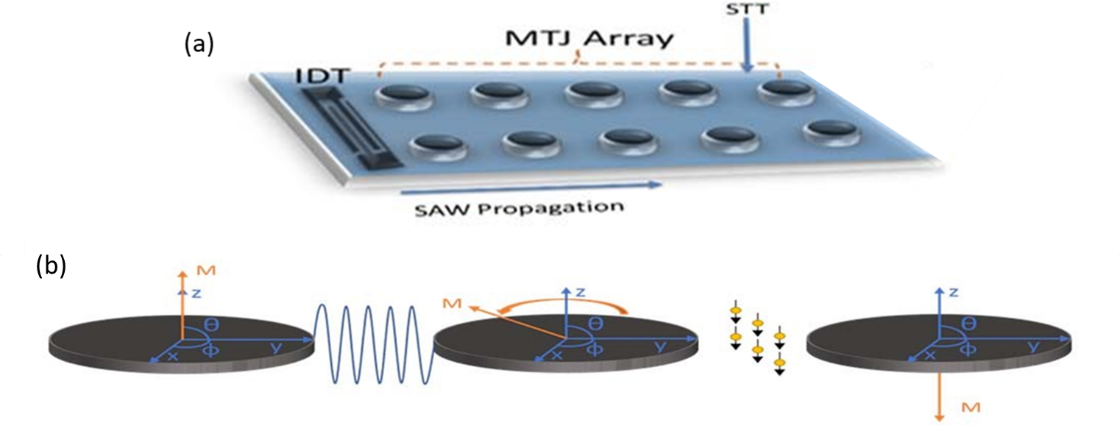Computer Memory Devices
Resonant Acoustic Wave Assisted Reversal of Nanomagnets
Energy efficient nano-magnetic memory devices
Amidst the efforts to overcome the limitations of random access memory (RAM) and create more energy efficient and faster computer architectures, there is a desire to replace volatile CMOS memory devices. One of the current alternatives involves the use of magnetic tunnel junctions (MTJs), in which a bit of information is written using spin transfer torque (STT). However, this is less efficient than the current CMOS devices and requires a very large current. The proposed method developed by our researchers reduces the STT current and energy dissipation required to write bits in perpendicular MTJs by using surface acoustic waves (SAW) that induce ferromagnetic resonance [1].
The technology
The hybrid resonant SAW and STT scheme is able to switch the magnetization of nanomagnets for perpendicular to plane magnetization, as demonstrated in Figure 1. The SAW is applied over an entire array of nanomagnets which adds little to the total energy dissipation per bit switch. Once the nanomagnets have reached their maximum deflection, STT can be applied to minimize the spin current that is required to switch as compared to a state not stressed by SAW. This method is capable of achieving an order of magnitude reduction in energy dissipation and could serve as the foundation for energy efficient spin transfer torque random access memory (STTRAM) systems whose size can be scaled aggressively.

Figure 1. (a) MTJ array switched with resonant SAW and STT; (b) Magnetization dynamics with resonant SAW + STT switching of out-of-plane magnetization.
